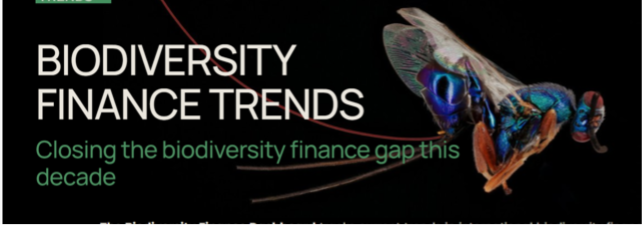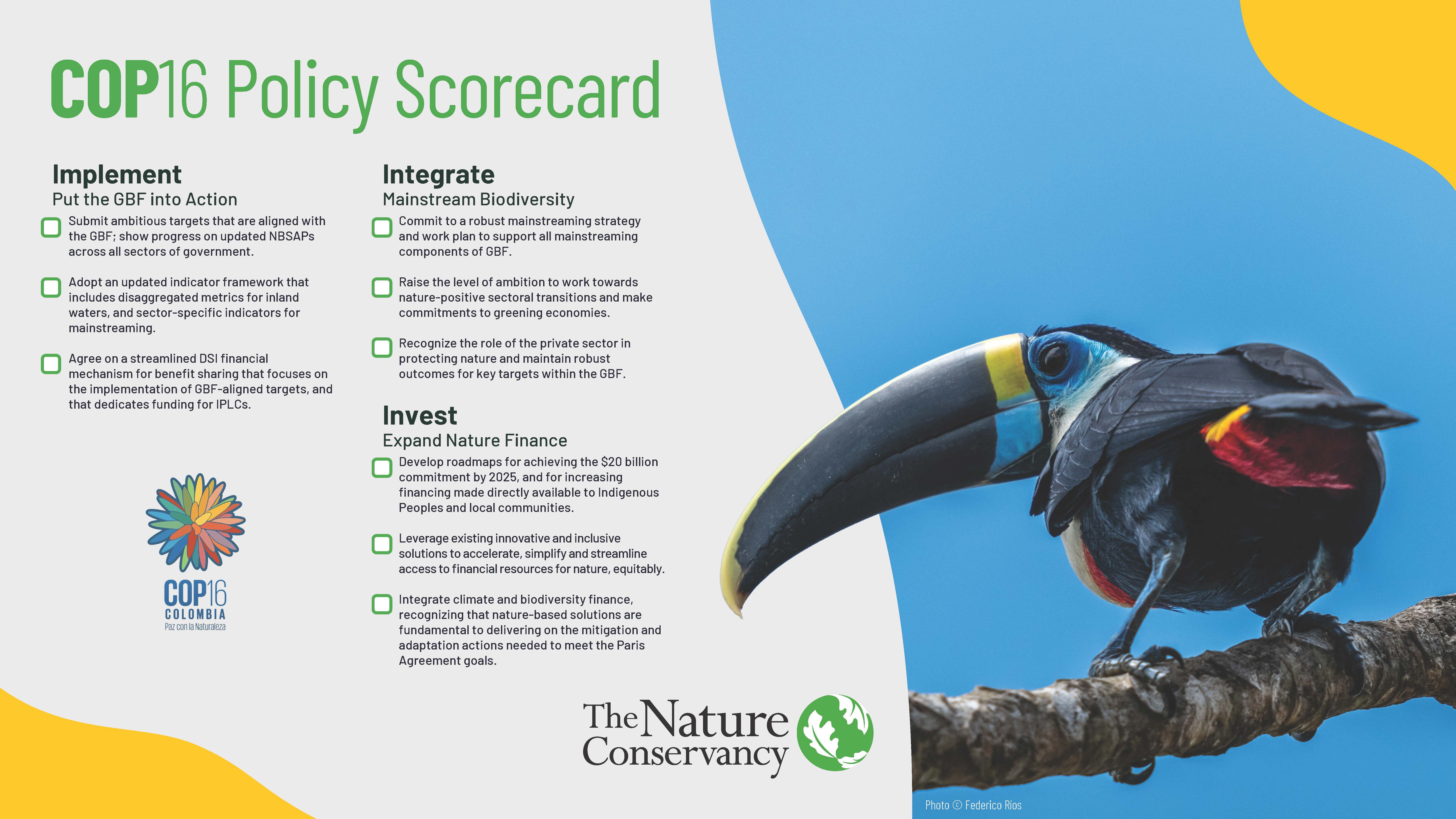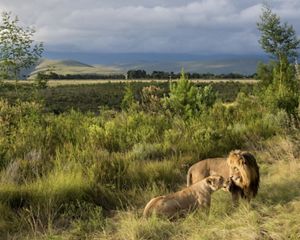
Since the signing of the Kunming-Montreal Global Biodiversity Framework in 2022, the world has made strides in developing solutions that unlock finance for nature and climate. Two years on, the upcoming UN Conference of Parties for Biological Diversity (CBD COP16) provides an opportunity to take stock of these finance trends, and further raise ambition to close the finance gap to halt and reverse the decline of nature this decade.
Our global insights, straight to your inbox
Get our latest research, perspectives and solutions to today’s sustainability challenges.
Sign upAccording to a review of the latest global data, there have been positive signs that efforts to mobilize finance for nature is progressing:
- 101 countries and territories now have biodiversity-positive incentives for conservation or sustainable use of natural resources.
- Under the EU’s new Corporate Sustainability Reporting Directive 49,000 companies will now report on social and environmental impact.
- 420 organizations across 50+ countries, managing assets worth US$15.9 trillion, have adopted the recommendations of the Taskforce for Nature-related Financial Disclosures, which ultimately aims to shift global financial flows toward nature-positive outcomes.
- Progress towards the global goal to deliver $20 billion in biodiversity finance to countries in the Global South by 2025 is also evident – but with one year left to reach that target, we need to accelerate these trends further.
The assessment comes from an update to the Biodiversity Finance Dashboard, a tool developed by the Department for Environment Food and Rural Affairs for the United Kingdom and The Nature Conservancy. The Dashboard tracks current trends in international biodiversity financial flows and highlights both public and private actions driving the mobilization of nature finance.
The Dashboard leverages the latest and best available data on progress against the finance targets of the Kunming-Montreal Global Biodiversity Framework (KMGBF) and aims to draw attention to the urgent need to mobilize increased finance for nature from all sources and close the $700 billion annual biodiversity finance gap.


Momentum is Growing, but More Must Be Done
The trends outlined in the Dashboard show growing recognition of the need to integrate biodiversity considerations into public and private finance strategies. It highlights positive momentum towards adopting innovative tools and policies to finance nature’s conservation and restoration, such as corporate disclosures and positive incentives for nature.
However, more must be done to get money to the countries that need it most. The UN reports that around 60% of low-income nations—many of whom are the most vulnerable to climate change—are at risk of or already in debt distress, limiting their ability to protect their biodiversity and overcome climate threats. At COP16 this year, the world must agree on innovative mechanisms to create equitable change at scale.

The Role of Policy in Biodiversity Finance
The current level of biodiversity finance and current institutional mechanisms for valuing and investing in biodiversity are not at the scale needed.
Governments play a pivotal role in this journey. By implementing measures that mainstream biodiversity finance, and which incentivize positive outcomes for nature, they can ensure that all sectors contribute to the solution rather than the problem.
The Biodiversity Finance Dashboard offers a broad look at the state of global biodiversity finance, using the best available sources of publicly accessible data to provide an overview of current trends. This overview is a crucial step towards expanding our financial solutions to make a truly global investment in nature.
At COP16, TNC is advocating for more countries to outline their plans to value nature, including mainstreaming biodiversity into all government policymaking and budgeting, and developing ambitious National Biodiversity Strategies and Action Plans (NBSAPs) that map out their path to a nature positive future.
Maintaining positive trends towards the finance targets of the GBF will help ensure that financial resources are directed where they are needed most, protecting our planet’s biodiversity and securing a sustainable future for all.
Kunming-Montreal Global Biodiversity Framework
The Kunming-Montreal Global Biodiversity Framework (KMGBF) sets ambitious finance targets to transform nature conservation financing. Key targets include:
- Mobilizing $200 billion annually by 2030 from all sources—public, private, domestic, and international.
- Redirecting $500 billion in harmful subsidies by 2030, while scaling up positive incentives for biodiversity conservation and sustainable use.
- Taking actions to encourage and enable businesses to assess, disclose and reduce biodiversity-related risks and negative impacts.
These targets aim to increase financial resources, promote sustainable practices, and enhance transparency and accountability in biodiversity conservation.
Learn more about TNC at COP16
-

Biodiversity Finance Dashboard
Learn more about the Biodiversity Finance Dashboard. Explore the dashboard
-

COP16: Your Guide to the 2024 UN Biodiversity Conference
The race to protect the planet's biodiversity will be front and center this October when representatives from countries around the world gather in Cali, Colombia, for the United Nation's Biodiversity Conference, referred to as COP16. See the Guide to COP16
-

TNC's COP16 Policy Scorecard
Here are the outcomes that TNC is advocating at Biodiversity COP16 in Cali: Implement the GBF into action. Integrate mainstream biodiversity. And Invest, expand nature finance. Download the Scorecard


